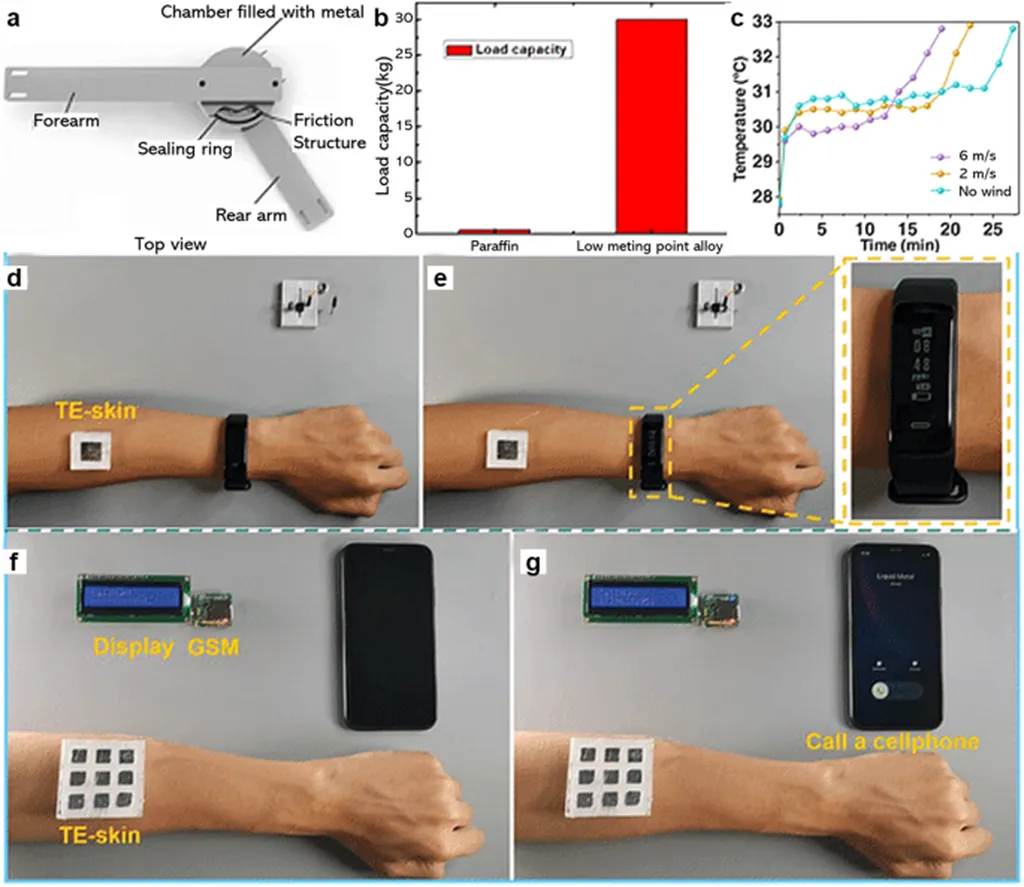In a groundbreaking development poised to reshape the energy sector, researchers have unveiled a flexible, reconfigurable battery that could revolutionize how we power wearable technology and other innovative devices. The study, led by Bohao Jin from the Key Laboratory of Cryogenics at the Technical Institute of Physics and Chemistry, Chinese Academy of Sciences, introduces a novel approach to battery design that leverages liquid metals and advanced manufacturing techniques.
The team fabricated a flexible battery structure using soft lithography and 3D printing technology. The battery employs a unique combination of materials: a Ga52.5Sn39.5Zn8 anode, a Bi67In33 cathode, and an alkaline hydrogel electrolyte. This combination allows for remarkable flexibility and reconfigurability. “We were able to create a variety of circuit structures to integrate different numbers of single cells, achieving batteries with varying voltages and powers,” Jin explained. The maximum open-circuit voltage (OCV) reached an impressive 4.6 V, with a peak output power of 1.193 mW.
One of the most intriguing aspects of this research is the introduction of a reconfigurable soft battery group. This innovation enables voltage regulation through a microfluidic perfusion process, eliminating the need for an external variable-voltage circuit. “This feature opens up new possibilities for dynamic power management in wearable and portable devices,” Jin noted.
The researchers also demonstrated the practical applications of their invention by fabricating an EGaIn-NaOH microfluidic switch to control a light-emitting diode (LED). Additionally, they created a wristband powered by the flexible battery, which successfully supplied energy to a liquid crystal display (LCD) with a clock or a temperature sensor.
The implications for the energy sector are profound. Flexible and reconfigurable batteries could lead to more efficient and adaptable power solutions for a wide range of applications, from medical devices to consumer electronics. The ability to regulate voltage without additional circuitry simplifies design and reduces costs, making these batteries an attractive option for future technologies.
Published in the International Journal of Extreme Manufacturing, which translates to the English name of the journal, this research represents a significant step forward in the field of energy storage. As the demand for wearable and portable technology continues to grow, innovations like these will be crucial in meeting the evolving needs of consumers and industries alike.
The study not only highlights the potential of liquid metals and advanced manufacturing techniques but also underscores the importance of interdisciplinary collaboration in driving technological advancements. As we look to the future, the flexible, reconfigurable battery stands as a testament to the power of innovation and its ability to transform the energy landscape.

